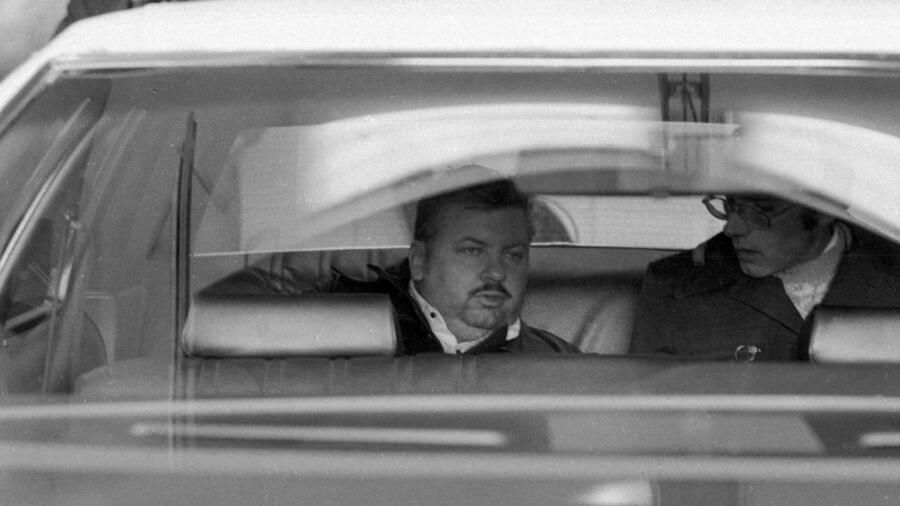He wore a painted grin. But beneath it? Death.
In the winter of 1980, America came face to face with one of its darkest nightmares: the trial of John Wayne Gacy, the smiling party clown who lured, tortured, and murdered 33 young men and boys. Behind the makeup of “Pogo the Clown” was a predator who buried innocence beneath his floorboards—and who now stood trial in a courtroom demanding answers for every soul lost.
This wasn’t just a criminal case.
It was a reckoning.
The Basement That Screamed the Truth
It began in late 1978, when investigators finally cracked the mask of John Wayne Gacy. Under his modest Chicago home lay a crawl space of horror—26 bodies hidden in makeshift graves. More would be found elsewhere on his property. Four others had been discarded like garbage in a nearby river.
He smiled at neighbors. He entertained children.
And all the while, he built a cemetery beneath his house.
A Courtroom Like No Other
On February 6, 1980, Gacy stood before the world—not in clown paint, but in cuffs.
Due to widespread media coverage, Judge Louis Garippo made a rare decision: instead of moving the trial, he brought in a jury from another county, locking them in with the weight of one of the most horrifying murder sprees in U.S. history.
The jury faced a single question:
Was Gacy insane… or simply evil?
Evidence So Dark, It Broke the Courtroom
The prosecution wasted no time. In chilling waves, they called:
- Parents who identified their children’s final belongings
- Survivors who spoke of chloroform, chains, and unthinkable torture
- Former employees who were asked to dig holes in the crawl space—unaware they were digging graves
The prosecution even introduced Gacy’s trapdoor—the one that led from his hallway to hell—as a courtroom exhibit. It sat, silent and damning, just feet from the man who used it.
One mother collapsed when she saw her son’s bracelet.
Another broke into sobs at the sight of a single shirt button.
The Insanity Plea: The Last Card Played
Knowing they couldn’t deny the killings, Gacy’s lawyers leaned on a desperate strategy: plead insanity.
They claimed Gacy suffered from a fractured mind—a man controlled by darker selves. Psychiatrists testified about delusions, psychosis, and split personalities.
But the prosecution tore it apart.
Their experts argued:
- Gacy planned every murder
- He kept souvenirs from victims
- He manipulated, lied, and hid the bodies—all signs of calculated control
“Insane?” the prosecutor scoffed.
“This man ran a business, scheduled his kills, and built a burial system. He wasn’t crazy. He was cold.”
The Moment Justice Took the Floor
In one of the most iconic courtroom moments in American legal history, lead prosecutor William Kunkle stepped forward for closing arguments.
He held a board of victim photographs—faces frozen in time.
One by one, he removed them.
And with each name spoken, he threw the photo into the trapdoor exhibit.
“He gave them no mercy,” Kunkle said.
“You owe him none.”
The room went still.
Some cried.
Some looked away.
But the message rang louder than any gavel: these were not just photos. These were lives.
The Verdict: Final Judgment
On March 12, 1980, after less than two hours, the jury returned:
- Guilty on all 33 counts of murder
- Death penalty the very next day
Though only 12 murders qualified for capital punishment due to law changes, it was enough.
John Wayne Gacy was now officially the most prolific convicted serial killer in U.S. history.
Gacy on Death Row: The Killer Who Wouldn’t Shut Up
For the next 14 years, Gacy painted pictures of himself as Pogo the Clown and gave delusional interviews, denying guilt and blaming his victims. The audacity stunned the world. His paintings—sold to collectors—triggered outrage from victims’ families.
On May 10, 1994, Gacy was executed by lethal injection at Stateville Correctional Center.
His last words?
“Kiss my ass.”
Even in death, he refused remorse.
A Legacy Stained with Innocent Blood
What the Gacy trial left behind wasn’t just justice—it was a cautionary tale carved in tragedy.
Former prosecutor Kelly Anne Navarro said it best:
“He didn’t just murder 33 boys.
He murdered families, futures, and faith in humanity.”
Decades later, Gacy’s name still echoes as a warning:
Evil doesn’t always come with fangs. Sometimes, it wears a painted grin.
🔍 Frequently Asked Questions
How many murders was Gacy convicted of?
33 counts of murder, the most at that time in U.S. legal history.
Was Gacy really insane?
The jury rejected the insanity defense. Evidence showed deliberate planning and concealment.
Where were the bodies found?
26 in his crawl space, 3 on his property, 4 in the Des Plaines River.
How long was Gacy on death row?
14 years. He was executed in 1994 by lethal injection.
What made the trial so historic?
It was one of the first to use a sequestered, out-of-county jury and involved exhibits like Gacy’s actual trapdoor. It also revealed the terrifying dual life of a trusted community figure turned monster.

